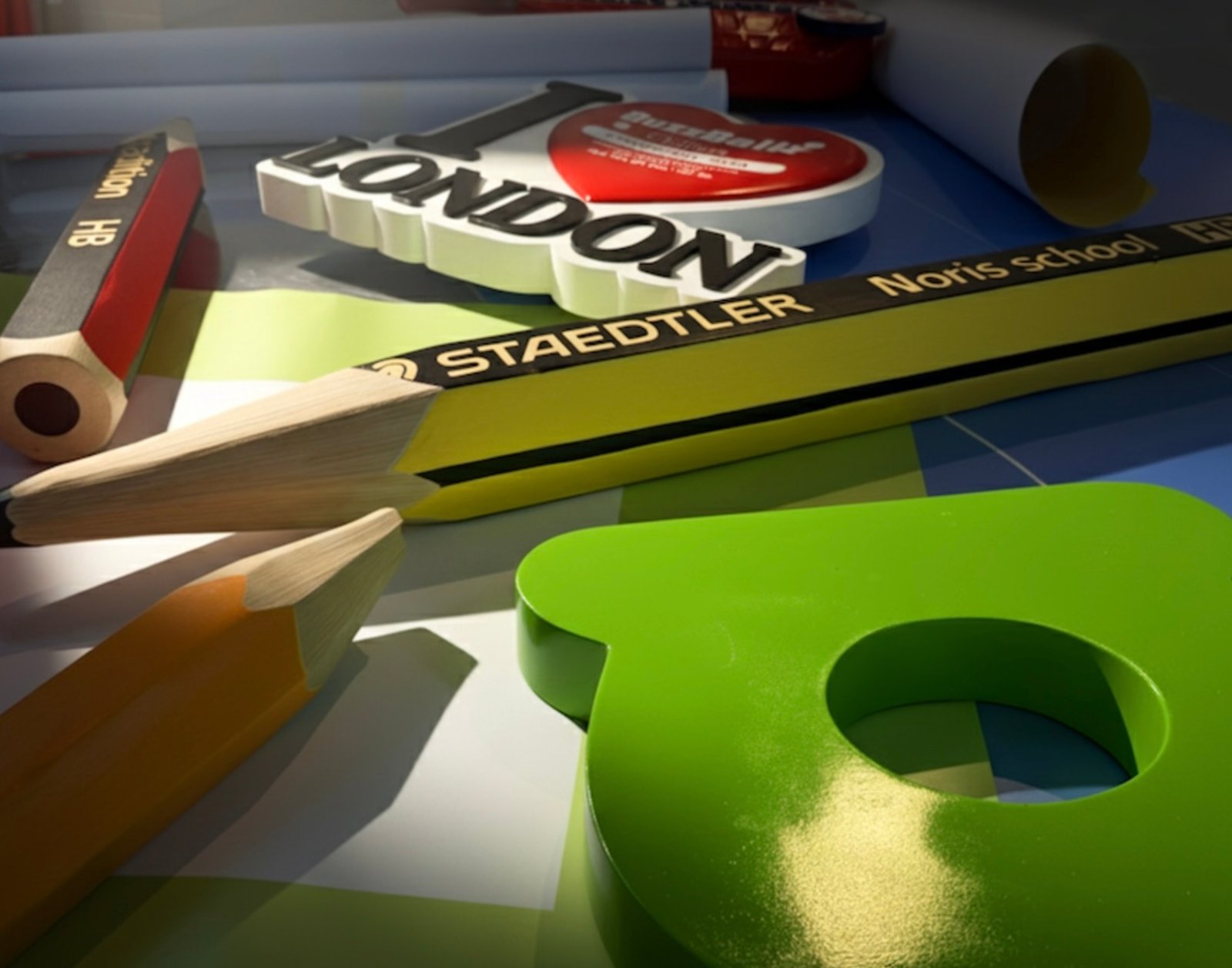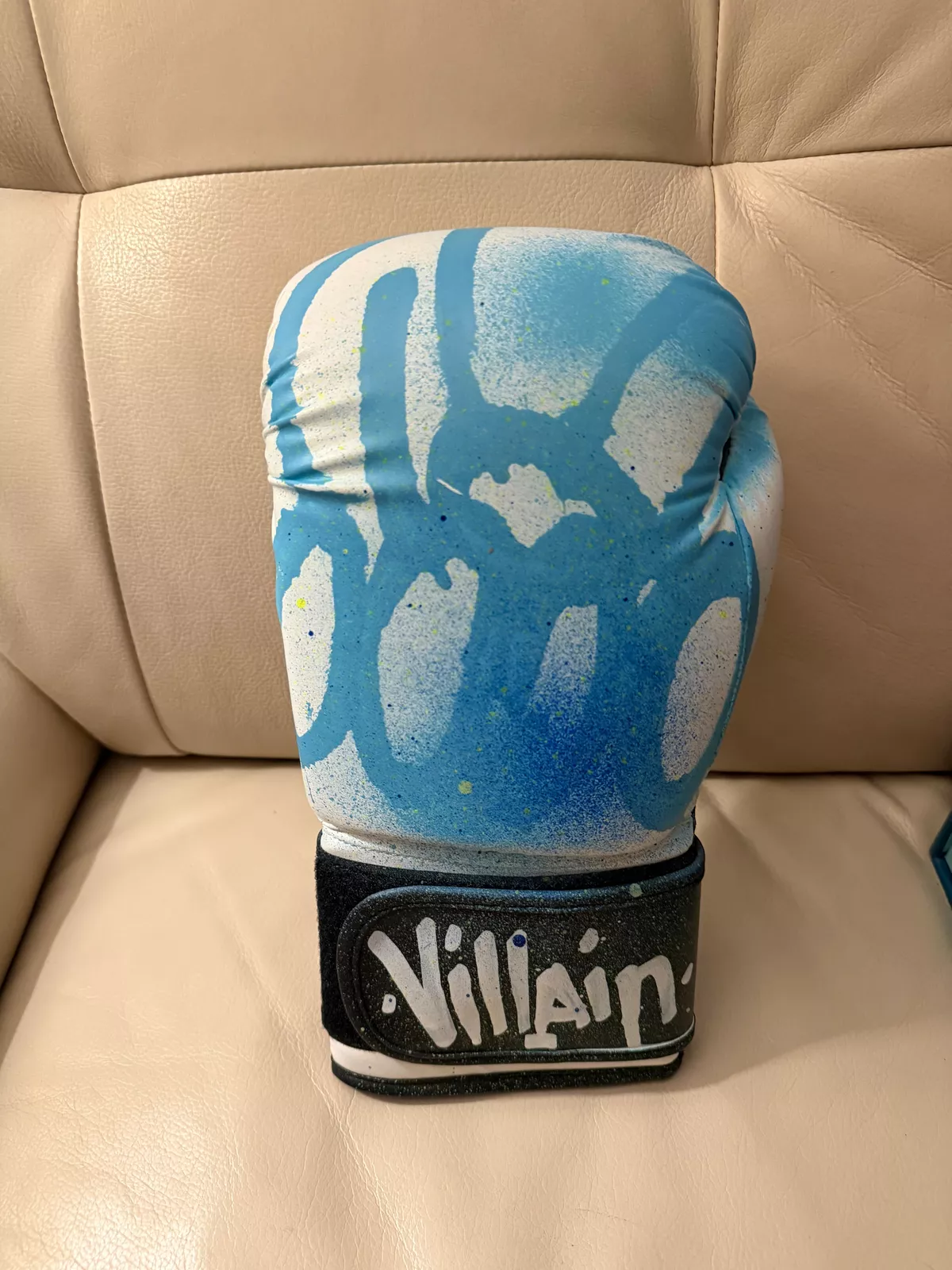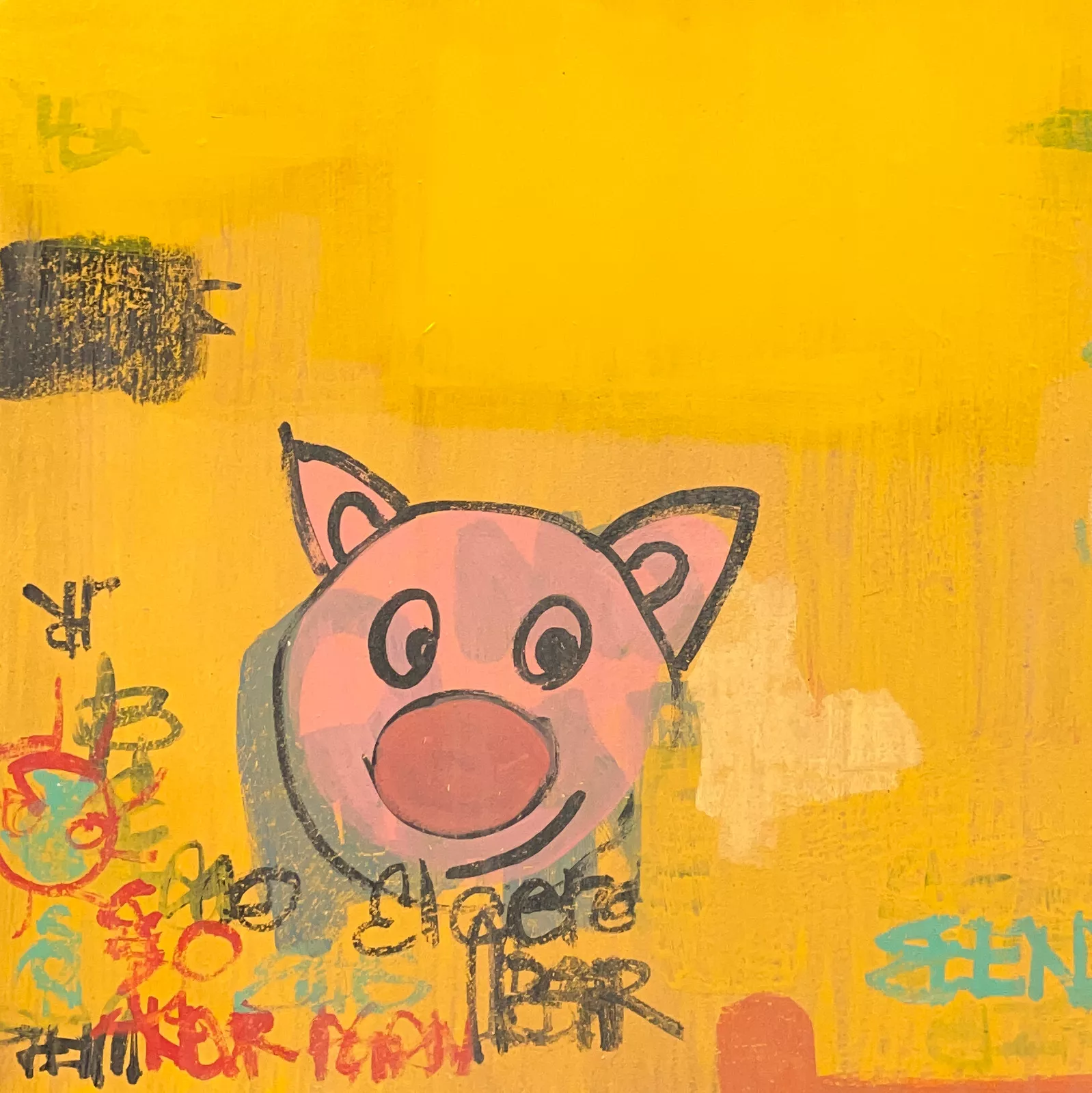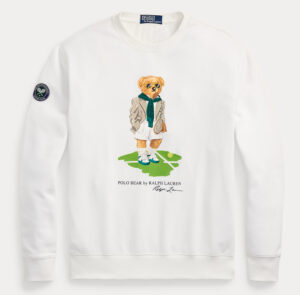Albert Oehlen’s 2023 painting Untitled is a large-scale oil on canvas work—measuring 90 ⅝ × 98 ½ inches—that exemplifies the artist’s ongoing interrogation of abstraction, figuration, and the boundaries of painterly expression in the contemporary digital landscape. Presented in the “New Paintings” exhibition at Gagosian, Grosvenor Hill, London, from March 21 to May 11, 2024, the work is a continuation of Oehlen’s decades-long engagement with the medium of painting as both material and concept. It is also a pointed response to the image-saturated environment of the 21st century.
At first glance, Untitled offers a chaotic interplay of forms—gestural brushwork, digital-looking glitches, distorted outlines, and layered imagery. But beneath the surface noise lies a carefully orchestrated dialogue between painting’s historical legacy and its relevance in a world increasingly shaped by screens. Oehlen’s work refuses to settle into one reading. It is not strictly abstract, nor entirely figurative, and certainly not decorative. Instead, it is combative, messy, self-aware—and unrelentingly present.
A Confluence of Techniques and Themes
Oehlen has long rejected the purity of any singular artistic approach. His practice, developed over four decades, thrives on contradiction. Whether combining painting with digital printing, layering collaged advertisements into compositions, or deliberately painting “badly” to mock painterly conventions, Oehlen insists on complexity over clarity. In Untitled, this philosophy is in full force. The canvas presents a tangle of marks that speak different visual languages. Some brushstrokes are thick and gestural, suggesting an Abstract Expressionist influence. Others resemble digital smears or Photoshop distortions—artifacts of a world where images are edited, filtered, and consumed at a staggering pace.
But what unifies these disparate elements is Oehlen’s rigorous control over the act of composition. Despite the apparent disorder, there is nothing accidental here. Every form is placed with a purpose, every gesture calibrated to disrupt the viewer’s expectations. Oehlen doesn’t aim to resolve the tension between abstraction and figuration—he cultivates it. This is painting as provocation, not resolution.
Moreover, the painting’s ambiguous imagery invites multiple interpretations. One viewer might discern a grotesque face buried in the chaos; another might see an architectural structure, glitching out of form. These visual ambiguities mirror the conceptual tensions within the work. It’s not just about what you see, but how the act of seeing is conditioned—by context, culture, and technology.
Interplay with Digital Aesthetics
Although Oehlen works in oil on canvas—a medium with centuries of tradition—his work increasingly engages with the visual logic of the digital. This interplay is especially relevant in Untitled, where many of the forms and textures seem to borrow from the screen-based world: pixelation, layering, cut-and-paste aesthetics, and chromatic distortions all suggest the influence of digital software. Yet they are painstakingly rendered by hand.
This tension between medium and message is crucial. Oehlen mimics digital aesthetics using analog tools, creating a kind of visual uncanny valley. The work looks like it could have been composed on a computer, but the texture, scale, and physicality reveal otherwise. In doing so, he calls attention to painting’s capacity to absorb and reflect other media without losing its specificity.
This is not a new concern for Oehlen. Since the late 1990s, he has incorporated computer-generated imagery into his paintings, questioning what constitutes originality and authorship in an era of mechanical reproduction. In Untitled, he continues this investigation, but with greater subtlety. The digital references are not literal but embedded in the painting’s language—refracted through brushwork, palette, and composition. The result is a work that feels contemporary not because it imitates digital art, but because it wrestles with the conditions of image-making in the digital age.
Furthermore, Oehlen’s method resists the immediacy and disposability of digital imagery. Online images are scrollable, fleeting, and endlessly replicable. In contrast, Untitled insists on duration. It asks for time, engagement, discomfort. It cannot be understood in a glance or translated into a thumbnail. This resistance is political in its own way—a refusal to let painting become another form of content.
Historical Resonances and Anti-Nostalgia
While Oehlen is forward-looking, his work is also steeped in art history. He is acutely aware of the traditions he challenges. In Untitled, one might detect echoes of Willem de Kooning’s slashed figures, the raw energy of Jean-Michel Basquiat, or even the collage strategies of Kurt Schwitters. But these influences are not quoted with reverence—they are filtered, fractured, and often parodied. Oehlen does not romanticize the past; he deconstructs it.
This approach aligns with his early association with the German neo-expressionist movement in the 1980s, particularly the so-called “Bad Painting” ethos. Alongside contemporaries like Martin Kippenberger, Oehlen questioned the sincerity and seriousness of modernist ideals. Instead of striving for harmony or beauty, they embraced irony, pastiche, and visual awkwardness. Oehlen has since refined this approach, but the irreverence remains.
In Untitled, the surface is restless. It offers no central focus or clear narrative. Instead, it pulses with contradictory impulses—gesture vs. geometry, spontaneity vs. design, analog vs. digital. This push and pull is not accidental. It is Oehlen’s way of refusing resolution, of keeping painting in a state of active tension. The result is not just an image but an event—a record of conflict, inquiry, and assertion.
Conceptual Underpinnings: Control vs. Chance
Oehlen’s conceptual concerns are tightly bound to his methods. One of the defining features of his practice is the interplay between control and chance. He often begins a work with deliberate constraints—such as using only a specific color palette, working within a digital framework, or applying collage materials—and then allows intuition and improvisation to disrupt those limits. In Untitled, this dialectic is visible in the balance between structure and chaos.
The painting carries the imprint of both planning and spontaneity. Some areas feel methodically constructed, with shapes that seem almost architectural. Others erupt with gestural marks that suggest immediacy and risk. This duality invites the viewer to consider the role of decision-making in art. How much is intentional? How much is discovered in the act of making? Oehlen doesn’t offer clear answers. Instead, he foregrounds the questions.
This aligns with broader concerns in contemporary art around authorship, agency, and process. In a world where AI-generated images, algorithmic feeds, and automated tools shape visual culture, Oehlen’s insistence on ambiguity becomes a form of resistance. He does not offer a transparent window into the artist’s mind. He offers a hall of mirrors—distorted, playful, and deeply aware of its own construction.
The Viewer’s Role: Meaning as Construction
Another key aspect of Untitled is its demand on the viewer. The painting does not communicate a fixed message. There are no clear symbols or narratives to decode. Instead, meaning is constructed in the act of looking. Each viewer brings their own associations, biases, and interpretive frameworks, which the painting activates and challenges.
This openness is part of Oehlen’s larger strategy. He refuses to dictate how his work should be read. Instead, he sets the stage for a negotiation between the artwork and the viewer. This positions painting not as a static object but as a dynamic process—one that continues in the mind of the audience.
In this way, Untitled is deeply contemporary. It mirrors the fragmentation of meaning in our current cultural moment, where truth feels unstable and images are endlessly contested. Oehlen doesn’t try to resolve this instability; he enacts it. His painting becomes a site of inquiry rather than a statement.
A Contemporary Reckoning
Albert Oehlen’s Untitled (2023) is not merely a painting—it is a proposition. It proposes that painting can still matter in a world dominated by digital images. That ambiguity can be more powerful than clarity. That tradition, rather than being a burden, can be a tool for reinvention. And that the act of painting—slow, physical, and reflexive—has something vital to offer in a time of acceleration and disembodiment.
What makes Untitled so compelling is not just its visual complexity, but its conceptual rigor. It’s a work that embodies contradiction: analog in form, digital in reference; historical in method, contemporary in affect. It offers no easy answers, no comforting narratives. Instead, it insists on discomfort, on attention, on thought.
In an art world increasingly shaped by spectacle and branding, Oehlen’s commitment to difficulty is refreshing. He doesn’t aim to please; he aims to provoke. And in doing so, he reaffirms painting’s capacity not just to represent the world, but to question it.
Oehlen once said, “I want to make beautiful paintings, but I don’t want to do it by using beautiful colors.” That ethos permeates Untitled. It is a painting that challenges what beauty, meaning, and painting itself can be in the 21st century. And in that challenge, it becomes something more than an image—it becomes an argument for the continued relevance of art in a world that often forgets to look.
No comments yet.








